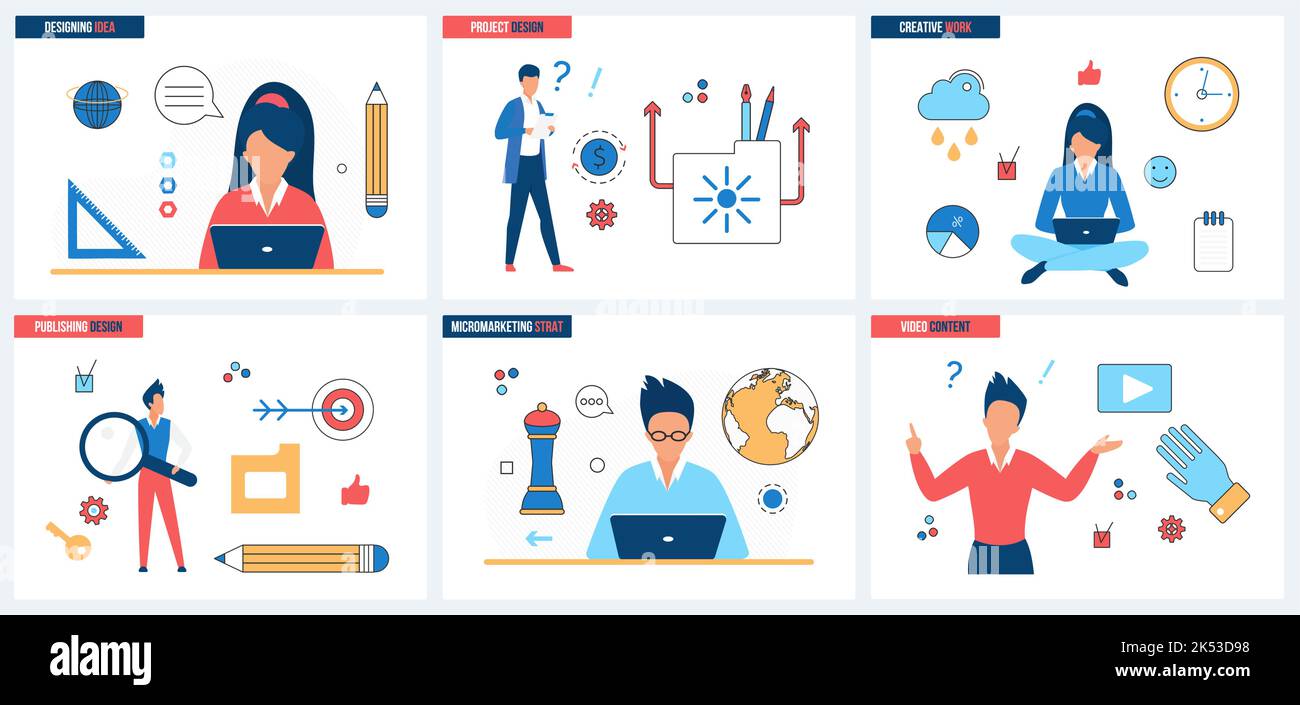Creating cartoons is a fascinating blend of art, storytelling, and technology. Whether you're a budding animator or simply curious about the process, understanding how cartoons come to life can be incredibly rewarding. From conceptualizing characters to the final edits, each step is vital in crafting a captivating animated story. With platforms like Dailymotion, sharing your creations has never been easier, making it a great time to dive into the world of cartoon creation!
The History of Animation

Animation has a rich history that dates back thousands of years! The journey from simple drawings to the vibrant animations we see today is nothing short of remarkable. Let’s take a look at some key milestones in the evolution of animation:
- Prehistoric Times: Evidence of early animation can be seen in ancient artifacts like the paleolithic cave paintings of animals that appear to move when viewed in a sequence.
- 19th Century Innovations: The invention of devices like the zoetrope and phenakistoscope allowed people to create the illusion of motion using still images. These were crucial steps towards modern animation.
- Early 20th Century: The first animated films emerged, with Gertie the Dinosaur (1914) by Winsor McCay being a standout. It showcased character animation in a way that connected with audiences.
- Disney's Impact: In 1928, Walt Disney introduced Steamboat Willie, the first synchronized sound cartoon, revolutionizing the industry. Disney continued to innovate with features like Snow White and the Seven Dwarfs in 1937, the first full-length animated film.
- Television Era: The 1960s and 70s saw cartoons move to television, with shows like The Flintstones and Scooby-Doo becoming household names.
- Digital Revolution: The late 20th century brought computer animation into play. Pixar’s Toy Story (1995) became the first fully computer-generated feature film, changing the game forever.
- Modern Animation: Today, we have a vibrant mix of traditional, 2D, and 3D animation styles, allowing creators to experiment with various techniques. Platforms like Dailymotion provide an excellent outlet for new animators to showcase their work and reach a global audience.
The history of animation is a testament to human creativity and technological advancement. As we reflect on its journey, it’s exciting to think about what the future holds for cartoon creation!
Also Read This: Easy Hairstyles to Make at Home
3. Key Steps in the Cartoon Production Process

Creating a cartoon is much like putting together a puzzle—each piece plays a critical role in bringing the whole picture to life. Here’s a breakdown of the key steps in the cartoon production process:
- Concept Development: This is where the magic begins! It starts with brainstorming ideas, developing characters, and outlining the story. Think of it as building the foundation of your future cartoon.
- Scriptwriting: Once you have a solid concept, you’ll want to write a script. This will include dialogue, scene descriptions, and actions. A good script sets the tone for the entire cartoon.
- Storyboarding: Next comes storyboarding, where you visually map out each scene. This step is like a comic strip version of your cartoon, helping to visualize the flow of the story.
- Character Design: Here, artists create the unique looks of each character. From their clothing to facial expressions, this step is crucial for personality and relatability.
- Background Design: While characters are getting their makeover, backgrounds are being designed to set the mood and context of the scenes, whether it’s a whimsical forest or a bustling city.
- Animation: This is where all the hard work comes together! Animators create movement by bringing characters and backgrounds to life, utilizing techniques like 2D, 3D, or stop-motion animation.
- Voice Recording: Now it’s time to add voices to your characters! Voice actors bring personality and depth, making characters memorable and engaging.
- Sound Design and Music: Sound effects and music enhance the experience, adding emotion and drama to the scenes. Think of how a suspenseful score heightens the tension!
- Editing: Finally, all the elements are stitched together in the editing phase. This is where timing, pacing, and continuity are polished to perfection.
Each step is interconnected, requiring creativity and collaboration. It’s a labor of love that transforms ideas into vibrant animations that can entertain and inspire audiences around the world!
Also Read This: Step-by-Step Guide to Applying Lipstick Perfectly with Dailymotion
4. Tools and Technology Used in Animation
In the world of cartoon creation, technology is an artist's best friend! The right tools can make the difference between a good cartoon and a great one. Let’s dive into some of the essential tools and technologies used in animation:
| Tool/Software | Purpose |
|---|---|
| Adobe Animate | Used for 2D animation, allowing artists to create intricate animations with vector graphics. |
| Toon Boom Harmony | A professional-grade software popular for traditional animation techniques, storyboarding, and compositing. |
| Maya | A powerful 3D animation software used for character modeling, rigging, and animated scenes. |
| Blender | A free, open-source 3D software that's gaining popularity for its robust animation tools and community support. |
| TVPaint Animation | A bitmap-based animation software that’s great for traditional 2D animation techniques. |
| Audacity | Used for audio editing and sound design, helping to create clear voice recordings and sound effects. |
These tools help animators express their creativity and streamline the production process. Whether you’re a hobbyist or a professional, mastering these technologies can significantly enhance your animation skills. So, get ready to dive in, explore, and start creating the next big cartoon sensation!
Also Read This: Simple Ways to Prevent Adverts from Appearing on Dailymotion Videos
5. The Role of Storyboarding in Animation
When it comes to creating a cartoon, storyboarding is like laying the foundation of a house. It’s a crucial step in the animation process that brings the script to life, allowing creators to visualize scenes before diving into the actual animation. Think of it as a comic strip version of your cartoon—each panel representing a key moment in the story.
So, why is storyboarding so important? Here are a few reasons:
- Visualization: Storyboards help animators see how the story flows. It’s easier to adjust scenes and pacing when you can literally see them laid out.
- Timing: By determining how long each scene will last, animators can better plan the timing of movement and dialogue, ensuring everything feels natural.
- Collaboration: Storyboards serve as a communication tool between writers, directors, and animators. Everyone can refer to the same visuals, making it easier to discuss ideas and feedback.
- Problem-solving: It’s much easier to spot issues in a storyboard than in a fully animated scene. By identifying potential problems early, teams can save time and resources.
Creating a storyboard typically involves sketching out the key scenes and adding notes about dialogue, character actions, and even camera angles. While some artists prefer hand-drawing their storyboards, digital tools like Toon Boom Storyboard Pro or Storyboard That are popular choices that offer flexibility and editing capabilities.
In the end, storyboarding is about refining the narrative and establishing a blueprint for the animation. It’s an essential step that can make or break the final product, ensuring that the cartoon is engaging and coherent. Without a solid storyboard, the animation process can become chaotic, leading to inconsistencies and a less compelling story.
Also Read This: How to Make Bracelets at Home with Creative Craft Ideas
6. Voice Acting and Sound Design in Cartoons
Let’s talk about a behind-the-scenes element that often takes the spotlight—voice acting and sound design! These components breathe life into cartoons, transforming static images into relatable characters and immersive worlds.
Voice acting is an art form in itself. The right voice can completely change a character’s personality. Ever noticed how a cartoon character can evoke laughter or empathy just by the tone of their voice? Here’s why it matters:
- Character Identity: A unique voice sets a character apart. For instance, think of Bart Simpson’s mischievous tone or Scooby-Doo’s iconic speech. These voices become synonymous with the characters.
- Emotional Connection: Good voice actors convey emotions through their performances, making viewers feel more connected to the story. Take the heartfelt delivery from characters in Pixar films; it resonates deeply with audiences.
But it’s not just about the voices. Sound design plays an equally vital role. Imagine watching a cartoon without background music or sound effects; it would feel flat. Here’s how sound design enhances the experience:
- Atmosphere: Background music sets the mood. A whimsical score can make a scene feel lighthearted, while intense music can heighten drama.
- Sound Effects: The classic “boing!” when a character jumps or the swoosh of a superhero flying adds a layer of fun and realism to the animation.
Both voice acting and sound design work together harmoniously to create a rich auditory experience. Animators often collaborate closely with sound designers to ensure that voices and effects sync perfectly with the animated actions on screen.
In conclusion, the combination of voice acting and sound design not only enhances character development but also elevates the overall storytelling in cartoons. When done right, these elements can turn a simple animation into a memorable, engaging experience that resonates with viewers of all ages.
Also Read This: Stunning Watch Party Makeup Tutorials on Dailymotion
7. Post-Production: Editing and Final Touches
Once the animation is complete, it’s time to dive into the exciting world of post-production! This is where all the magic happens, transforming raw footage into a polished cartoon ready for the audience. Think of it as putting the final coat of paint on a beautiful piece of art.
In post-production, editing is crucial. The animation team works with editing software to arrange scenes, cut unnecessary parts, and ensure the story flows smoothly. Special attention is paid to the pacing of the narrative; after all, a well-timed joke or emotional moment can make all the difference!
Here are some of the key steps involved:
- Editing: This involves cutting scenes together, adjusting timing, and ensuring continuity. Editors might use software like Adobe Premiere Pro or Final Cut Pro.
- Sound Design: Adding sound effects and background music enhances the viewing experience. This is where voiceovers come to life, so it’s essential to sync them perfectly with the animation.
- Color Correction: This step adjusts colors and brightness to ensure every frame looks its best. It’s all about creating the right mood and atmosphere!
- Final Review: The team watches the entire cartoon to catch any last-minute errors. This is the time for tweaks and adjustments before the big release!
Once everything is polished, the final product is exported in a high-quality format that’s suitable for distribution. The anticipation builds as the team prepares for the launch, excited to see how audiences will react to their hard work. Post-production is not just about editing; it’s about crafting an engaging story that resonates with viewers!
8. How Dailymotion Showcases the Animation Process
Now that we’ve walked through the creation journey, let’s take a peek at how Dailymotion plays a vital role in showcasing this entire process. As a platform known for its diverse video content, Dailymotion offers a unique space for animators to share their work and connect with audiences.
Here’s how Dailymotion stands out:
- Dedicated Animation Channels: Dailymotion features specific channels dedicated to animation, where creators can upload their content, including behind-the-scenes videos. This allows viewers to explore the intricacies of animation!
- Community Engagement: Dailymotion’s platform encourages comments and interactions. Animators can receive feedback directly from viewers, fostering a sense of community and connection.
- Showcasing Series: Many animators use Dailymotion to premiere their series or episodic content, making it easy for fans to follow along with new releases and stay updated on their favorite shows.
- Collaboration Opportunities: By showcasing their work on Dailymotion, animators can discover potential collaborators, leading to exciting new projects and partnerships.
In addition to these features, Dailymotion’s user-friendly interface makes it simple for creators to upload and categorize their content, reaching a broader audience. The platform also supports various formats, so whether it’s a short clip or a full-length cartoon, it can find its place on Dailymotion.
Ultimately, Dailymotion is more than just a video-sharing site; it’s a vibrant ecosystem for animators to share their stories, connect with fans, and celebrate the art of animation. So, if you’re looking to dive deeper into the world of cartoon creation, Dailymotion is a fantastic place to start!
 admin
admin








